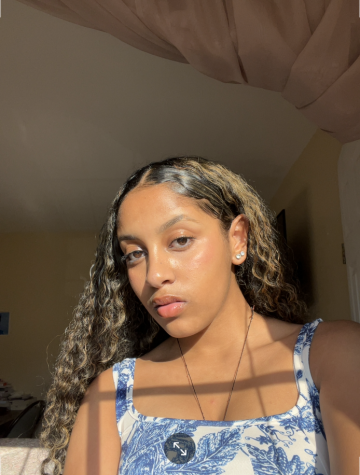The Positive Reform of Social Media over the Years
January 28, 2021
How many times did you watch cyberbullying videos in middle school? For most students, the moment when the guidance counselor came in every semester and taught the lesson is remembered as boring because it was repetitive. Each year students heard the same speech, the same scenarios, as they recycled words like “danger,” “safety,” and “strangers”.
Since the rise of the internet, schools have warned teens about the dangers of social media, even at times, teaching them to stay off and away from it. However, while respecting the view that the internet can pose some dangers is important, what is also important is to consider the perks that come along with the use of social media.
In 2007, the mobile internet was released on the Apple iPhones for the first time. This made the internet easily accessible to everyone. The Netflix Original documentary-drama hybrid, “The Social Dilemma”, explores the dangerous human impact of social networking. In it, social psychologist and author Jonathan Haidt states, “Gen Z, the kids born after 1996 or so, those kids are the first generation in history that got on social media in middle school.” Haidt’s point is important as it represents what was clearly a huge change for teens in terms of time spent online. And it soon took a toll on their mental/emotional health.
The article “Teen Depression is On the Rise. What Can We Do?” from the Families for Depression Awareness reports that “between 2011 and 2014, the percentage of 12-17 year-olds with depression increased from 8.2% to 11.4%.” This rise in depression aligns with the increased presence of social media.
In Summer Allen’s article “Social Media’s Growing Impact on Our Lives” for the American Psychological Association (APA), she notes that “adolescents who spent most time on social media and least time in face-to-face social interactions reported the most loneliness.” This shows that in those first few years that teens had access to social media it could’ve created negative effects on their mental health.
Now, thirteen years after social media access became instantly accessible to so many, we’ve seen the damage that it can do. There are many negative aspects of the internet that affect people’s lives through creepy interactions like stalking online, cyberbullying, and hacking. Without a doubt, social media presents important issues that must be addressed.
However, during this time of development and saturation, social media has evolved. So many things have changed social media, including a significant increase in the number of sites that exist and how each platform is used. For instance, on the video-sharing network Tik Tok there are a number of topics being called attention to that are beneficial to teenagers including the topics “body positivity” and “self-affirmation”. Sixity-nine percent of Tik Tok users are between the ages of 13 and 24. It is really appreciable that these kinds of topics are being spread across an app so that teens will feel more comfortable in their own skin.
Madison Harris, a freshman at Paint Branch High School shares “I used to be very insecure about how I looked in photos. TikTok has become a place where I feel more confident in my body and feel beautiful regardless of society’s beauty standards”. Her comment shows that some of these platforms can actually help teens with insecurities and other personal issues.
Another app, Instagram, has become very beneficial as well. During the rise of the BLM protests back in June, Instagram proved to be an extremely informative place for the black community and allies. For example, a day called “Blackout Tuesday” when no one posted anything except for a black square dedicated to spreading awareness of the ongoing issue. Many influencers and celebrities participated in the trend, disseminating a clear message to their audience. This day completely flooded the explore page and everyone’s feed filled with BLM organization links and ways to help. As a result of these links being shared, 11.4 million people have signed a petition to charge the officers involved in Breonna Taylor’s unjustified death.
More recently, the petition to permanently protect the Arctic National Wildlife Refuge was posted all over social media. Tik Tok star Charli D’amelio had spread awareness about the crisis, as did many other influencers on platforms such as Twitter, Instagram, and even FaceBook.
Amarachi Nwosu, a 9th grader at Paint Branch High School, feels that social media has been beneficial to her friendships. She says, “I have made plenty of friends off of Snapchat or Instagram whom I consider closer than people I’ve met in person. It really depends on the crowd you interact with.” This shows that online friends can help with social assurance and forming friendships.
In its earliest stages the internet and social media might’ve been a difficult thing for teens, but it appears otherwise. The progression of social media, though, has been successful. While there are still reasons for concern in how teens manage social media, the positive aspects of it have to be embraced as well.
Ultimately, social media can strengthen social cognizance, help create new friendships, and inform people about current events. Undoubtedly, it may be overwhelming to reach so many people and have so much power through the internet. Yet, though there can be significant downsides, especially for teens, it is important to acknowledge the perks it provides!













































